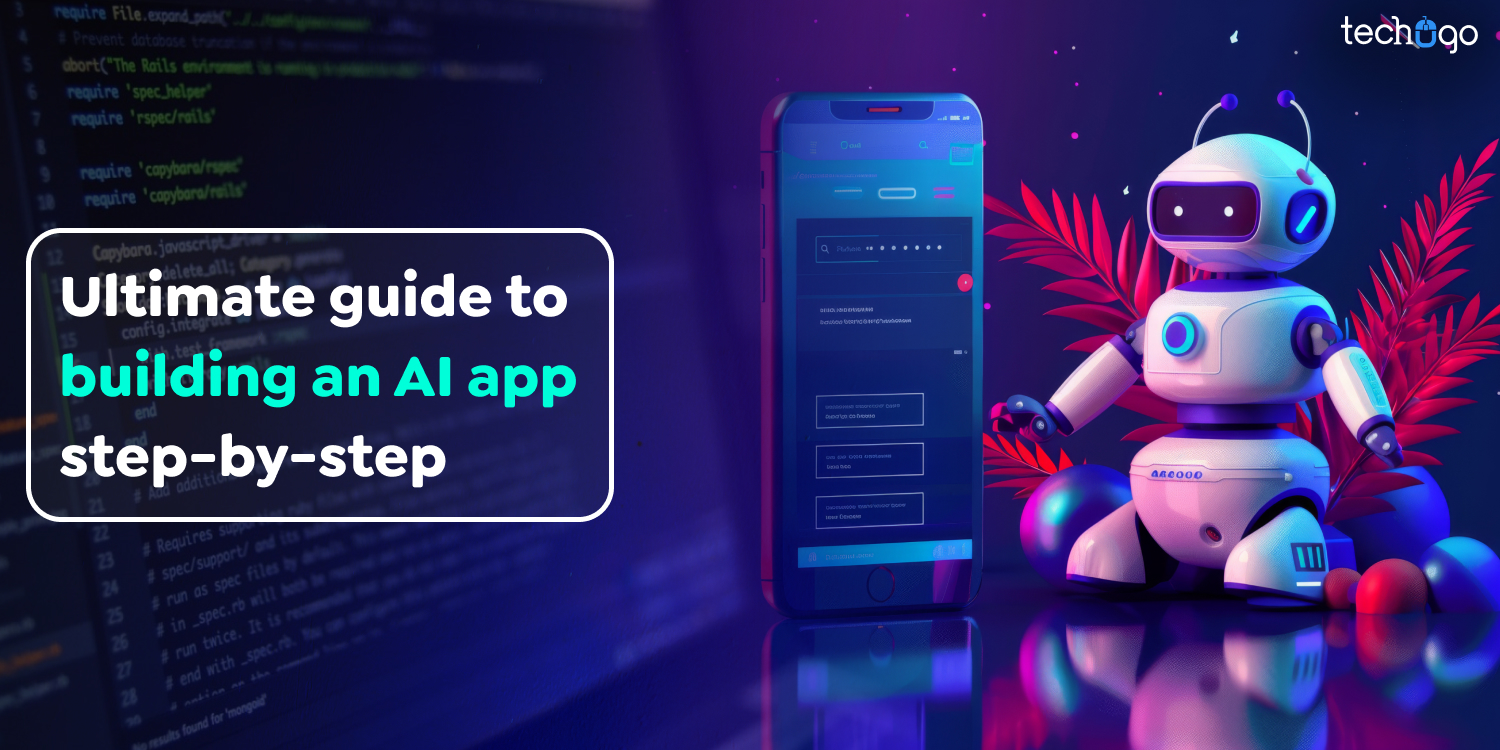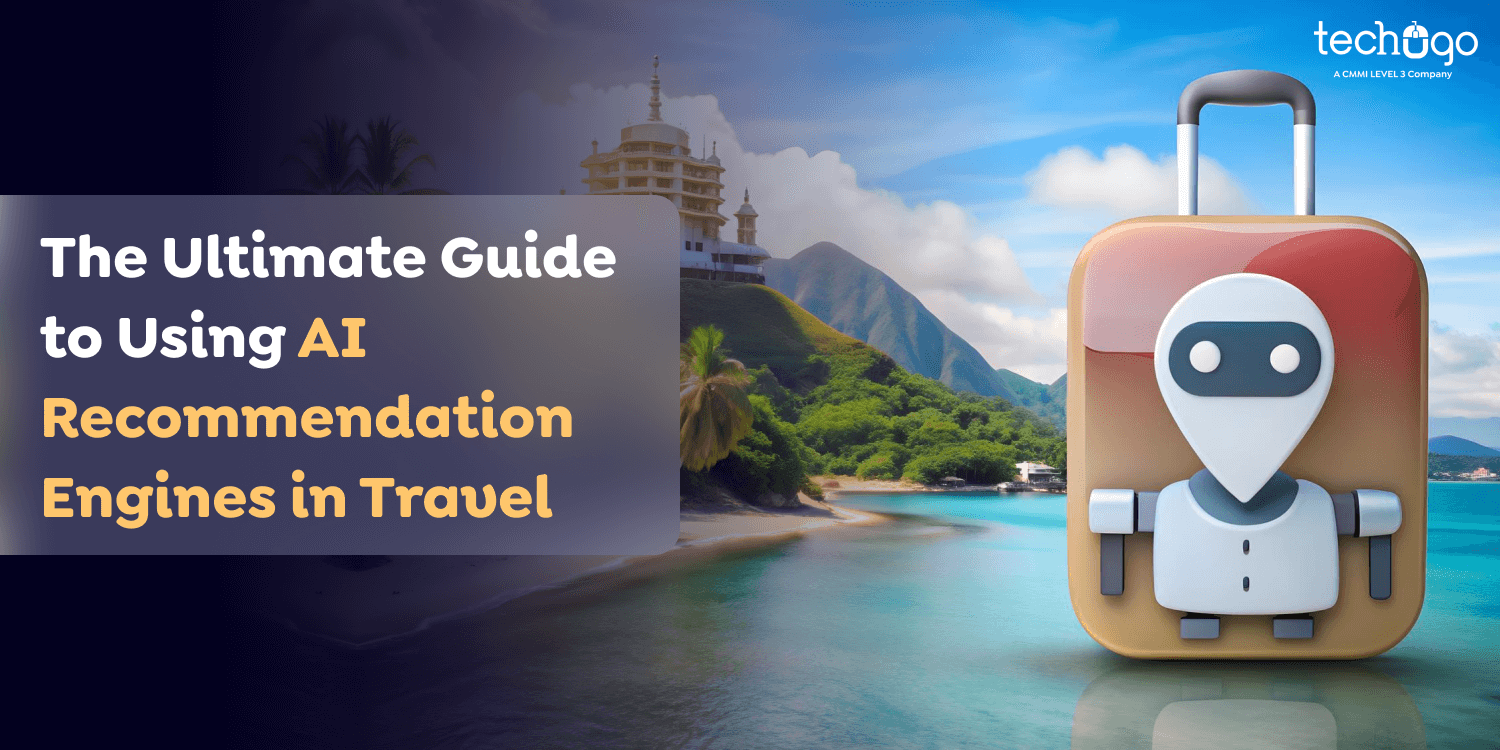14 Nov 2024
Updated on January 31st, 2025
How Much Will It Cost to Create an AI-Based Shopping App Like Target?
Matthew Connor
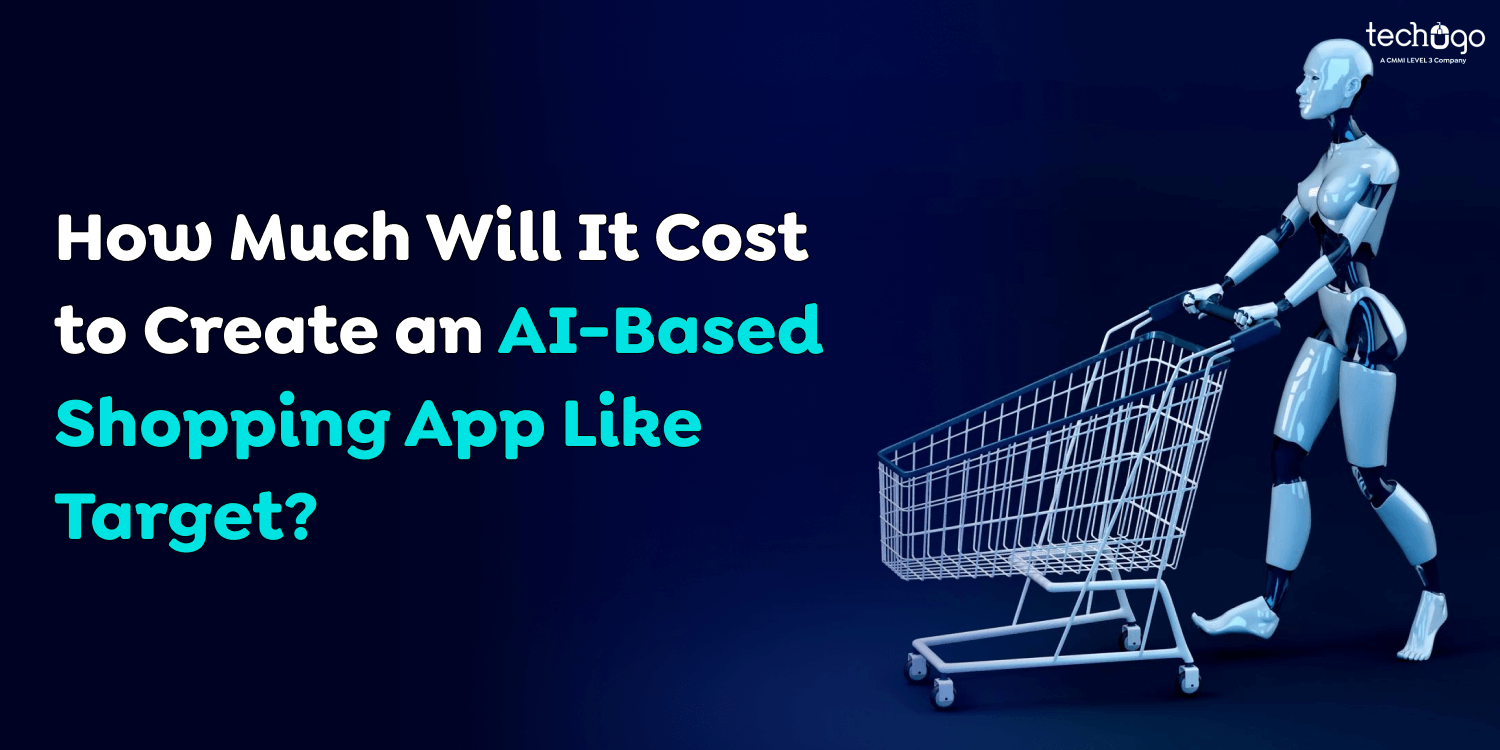
An app like Target requires massive investments in technology code, software, and overall structure, which could be more practical. The price also correlates to the previously mentioned features, the design level, and the development team’s place of work.
An AI-based shopping app integrates technological elements like algorithmic machine learning, data analysis, and natural language processing to develop an entirely new way of shopping. This planning and research phase is essential to an app development project since the potential users, competitors, and the specifics of the app should be determined.
Many companies make mobile applications for free. AI shopping app, such as Target, can be purchased at the low cost of $ 200,000 and $1 million. Costs for compensation to the development team include the project manager, front – and back-end designers, AI experts/data scientists, and UX/UI designers. Other expenses like wear-and-tear upgrades, wear-and-tear, and cloud hosting services will likely be ongoing. Statista believes that sales of the AI sector will grow to $31.18 billion before 2028, up from $4.84 billion.
What is a Target App?
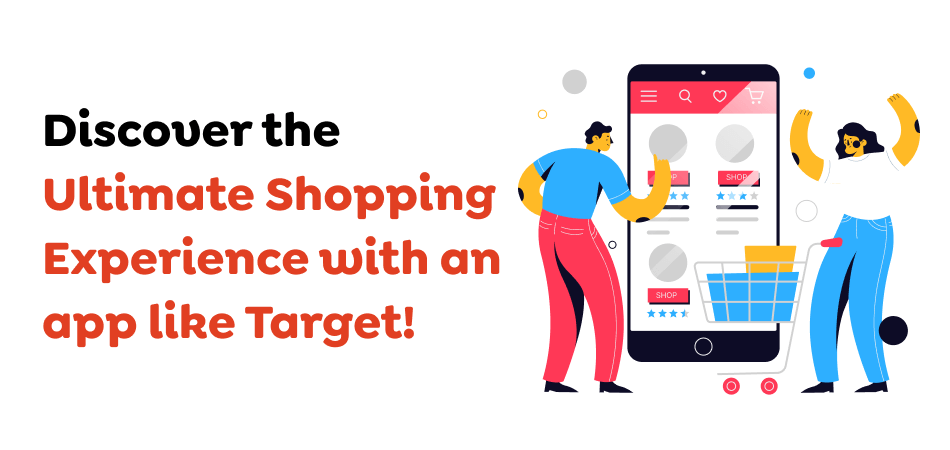
Target’s most trusted mobile shopping companion can be found within its renowned retailer’s app: with access to product locations saved via maps and saved maps for product browsing, cost analysis tools, and daily ads, you can make your experience all the more organized when organizing purchases and sales through the Target app.
With the lifestyle app developed, users can now pay for purchases in-store using Apple Pay or create lists and check barcodes. Furthermore, Target Circle also gives access to special discounts and benefits via this connection.
Also Read : How Much Does It Cost to Develop an App in 2025? A Comprehensive Guide
Why Should You Invest in AI App Development?
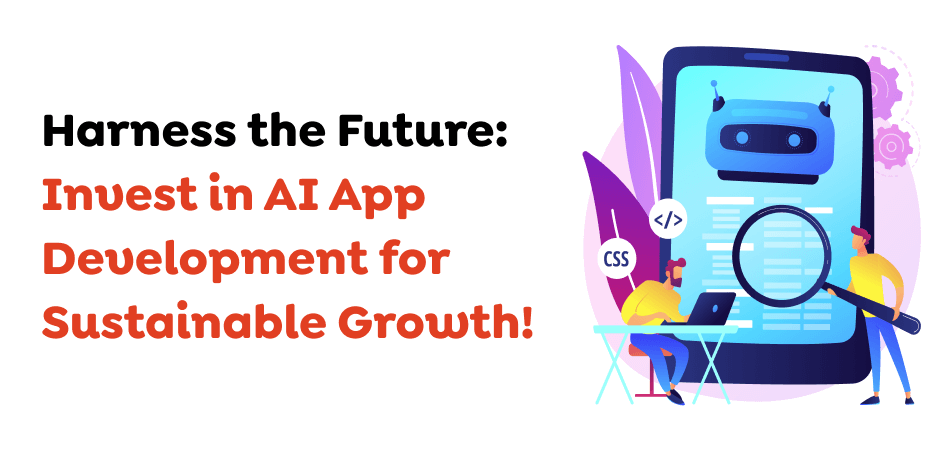
Businesses today are quickly turning towards custom AI application development for various reasons. Integration transforms processes and offers numerous possibilities that benefit both employees and management. Let’s examine some of the top advantages of investing in AI apps for your organization.
1. Increased Efficiency & Automation
AI-enabled apps can significantly boost efficiency and automation within businesses by streamlining repetitive chores or procedures, helping streamline work-related processes while increasing accuracy. This results in improved operational efficiencies, while automating tasks allows employees and workers to focus their energies on more challenging projects.
2. Better Decision Making
AI apps enable businesses to analyze extensive data sets with remarkable speed, providing information they can use for informed decisions based on this analysis. Businesses also gain new patterns and trends, which assist in staying relevant while keeping abreast of market development.
3. Personalized Experiences
AI apps enable businesses to provide more bespoke user experiences by quickly learning user preferences and behaviors through various means, including recommendation engines, personalized messaging platforms, and content distribution channels. This leads to enhanced customer engagement and satisfaction among their target market.
4. Resource Optimization & Cost Savings
While AI development costs initially can seem prohibitively expensive, their long-term cost-effectiveness makes up for it in spades. AI applications that automate repetitive tasks or optimize resources efficiently, as well as predictive maintenance, can effectively cut operational and additional maintenance expenses over time, saving operational costs and any added fees.
5. Competitive Advantage
Staying current with trends and technologies is becoming essential to maintaining a competitive advantage over rival companies. Artificial Intelligence, an emerging tech, provides organizations with a competitive advantage by allowing them to adapt quickly to changes in the market while offering top-quality solutions that fulfill customers’ requirements.
6. Flexibility and Scalability
AI-powered cloud apps offer great scalability and flexibility to businesses that host them, enabling enterprises to expand applications more quickly while remaining assured their infrastructure can adapt to changing workloads – an invaluable ability for the modern competitive business landscape.
7. Increased Customer Engagement Chatbots
Virtual assistants and other interactive AI tools can significantly boost customer engagement. By responding to questions quickly and providing instant assistance when needed—leading to faster service for each customer—chatbots enhance customer engagement and improve service for everyone involved.
8. Predictive Analytics
Artificial intelligence has proven its capabilities by developing predictive analytics, which is instrumental to effective planning. Predictive analytics allow businesses to accurately predict trends and market demands for better planning, thereby decreasing risks while increasing planning efficiency and opening up opportunities for growth and expansion.
9. New Product Development
Artificial Intelligence provides companies with new avenues for product innovation. From using AI features in devices designed with intelligent devices powered by AI applications to finding ways to diversify offerings to meet customer requirements more quickly than before, AI opens up endless opportunities.
AI-enabled software offers great potential to strengthen cybersecurity features. Such apps can efficiently detect fraud, analyze patterns, and provide real-time threat information to protect businesses against cyber attacks and fraudsters.
Also Read : Unlock the Future of Finance: How to Develop a Neobanking App Like SoFi
Benefits of using Artificial Intelligence for the field of Ecommerce
AI is more than just the next biggest thing in e-commerce. It’s an effective tool that can benefit your business and your customers. Let’s explore some of the main advantages.
1. Improved Customer Experience
One of the most significant impacts of AI in e-commerce is how it can improve the customer experience and ensure that customers return for more. With the help of personalization, AI can suggest products that are compatible with the customer’s prior purchases or browsing habits. Imagine it as a powerful personal shopping assistant that knows every customer’s preferences and assists them in their product selection.
In addition, many AI platforms offer 24/7 customer assistance through AI chatbots, also known as virtual assistants. These chatbots can address any issues or queries immediately, improving customer satisfaction.
2. Improvements in Marketing and Sales Strategies
AI is also able to assist with marketing and sales strategies. By studying vast amounts of data, AI can give personalized product recommendations that increase sales and cross-sell opportunities. Similarly, predictive marketing strategies are significantly improved with AI. Through machine learning, which uses it to look at past behaviors or patterns, AI is able to predict future patterns or preferences, assisting businesses in developing targeted marketing strategies.
Like Target, AI can play an essential role in remarketing by making it easier to reach customers who previously showed interest in specific items or services and encouraging them to purchase.
3. Effectiveness for Business Operations
AI can assist in streamlining your business operations, allowing you to increase efficiency while reducing expenses. For instance, AI can optimize delivery routes and manage logistics or warehouse operations inventory, reducing wasted time and money. AI can also play a role in controlling fraud in e-commerce through pattern recognition. It can identify and block suspicious transactions that give you and your customers peace of mind.
Also Read : How to Build an App Like Waze: Key Features and Development Process
Challenges and Considerations of AI-Powered Personalization
While using AI to personalize shopping experiences can enhance them, possible drawbacks arising from their integration must be considered.
1. Data Quality
Are you confident that your data is properly working for you? Poor quality of data, siloed data sources, and data fragmentation could limit the effectiveness of AI-powered personalization. Be sure to follow the best practices, such as:
Establish robust data governance procedures to ensure consistency, quality of data, and accessibility throughout your business.
Incorporating data integration software and platforms can help connect and consolidate data from various sources, enabling a single view of the customer’s information.
Integrating internal data with third-party and external sources to enhance customer profiles and improve personalization capabilities.
2. Data Privacy Concerns
The basis for personalization lies in acquiring and analyzing large amounts of customer information. Naturally, there are concerns over privacy security, data security, and the ethical use of data.
Be aware that every data breach costs businesses an average of $2.96 million per instance in the retail sector. Furthermore, it can take an additional 10 days to detect the violation and nine days to stop it.
3. To Conquer this Obstacle
Transparent data collection practices clearly explain to customers how their data will be gathered and processed and how it will be protected.
Affiliate or pseudonymous customers’ sensitive data to safeguard personal privacy while allowing the analysis of personalized.
To safeguard customers’ privacy rights, make sure you are in compliance with local and general data protection laws, such as the CCPA (California Consumer Privacy Act) or GDPR (General Data Protection Regulation).
4. Technical Complexity
Implementing AI to personalize your experience is a complex technical issue, as is data integration and algorithm preparation. To overcome this, seek the assistance of a reliable developer partner experienced in the field. Additionally, take note of the following tips:
Facilitate collaboration between engineers, data scientists, marketing, and other important stakeholders to ensure that everyone is on the same page about objectives, needs, and technical implementation.
Reduce the process into manageable, smaller modules or use already-built AI tools and systems to speed up development and deployment.
Switch to Agile methods and create a culture of continuous learning and exploration. It’s crucial to continuously improve AI algorithms and models based on feedback from real-world events and performance.
5. User Acceptance
Human factors play an important role in how you imagine. Establishing trust and a sense of acceptance is essential to successfully adopting AI-driven personalization. Some customers may be hesitant about sharing their personal information or doubt the validity and relevance of personalized recommendations.
This is how it is possible:
Explain how AI-driven personalization is implemented and why specific recommendations are given. Provide explanations or a rationale for suggestions to increase trust and confidence.
Give users control over their personal information and preferences, allowing them to opt-out or for individual experiences. Allow users to alter their privacy settings and preferences.
Also Read : Unlocking Efficiency: The Impact Of Apps Like Transit On Public Transportation
Steps To Develop An AI Shopping App
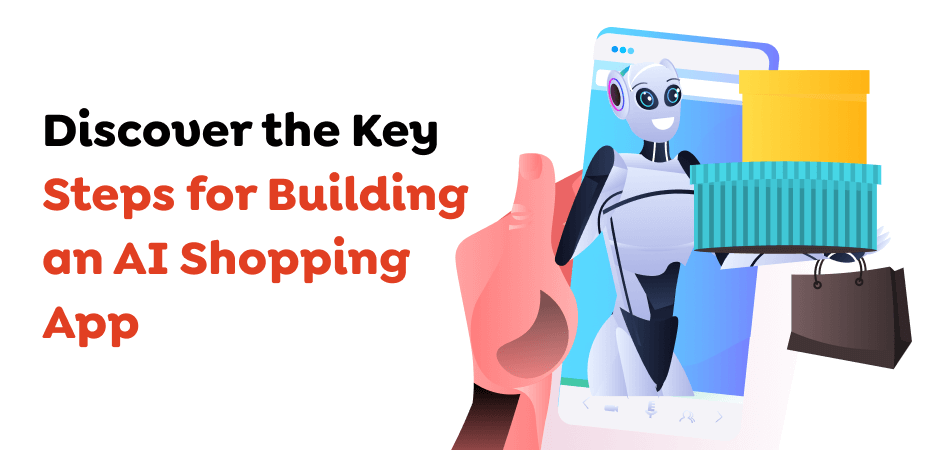
Here are some essential points to consider when creating your AI shopping application.
1. Market Research
Successful app development will require thorough market research, including understanding the preferences and expectations of your target audience. Reviewing your competitors will give you insight into what’s doing well and what you can do to help the app stand out.
2. Defining The App’s Features
Once you’ve gained explicit knowledge of the market you intend to target and the competitive landscape after understanding your intended customers and your competitive environment, the next step would be to determine the most crucial aspects of your shopping app. Primary features include descriptions that include images, a search feature that helps customers find products by keywords or categories, and safe payment options, such as the integration of credit cards with electronic wallets.
3. Choosing The Right AI Technology
The choice of artificial intelligence (AI) technologies to implement in your project requires an in-depth analysis of various aspects. Begin by studying different types of AI technologies, such as Natural Language Processing and Machine Learning. Once you’ve mastered an understanding of the basics, it is possible to ensure that the choices you make correspond to your needs. Make sure that the chosen technologies satisfy your needs.
4. Designing The User Interface
A user-friendly layout (UI) is essential for a practical application. Developing an intuitive, easy-to-use layout that facilitates navigation and enhances the user experience is necessary when designing an AI shopping app. Incorporating elements of AI within the UI will significantly improve users’ experience. Smart search suggestions, personalized product recommendations built on past purchases, and browsing habits are fantastic examples of how AI can enhance user experience.
5. Developing The App
Selecting the most suitable software development platform is crucial to ensure the app’s efficiency. When deciding, consider the ability to scale and compatibility with other technologies. The next step involves developing the algorithms to create the software’s AI capabilities. This will require machine learning techniques, such as the natural process of language (NLP) for chatbots and image recognition algorithms that support visual search capabilities.
6. Testing
Testing is vital to the whole development process. Different types of tests ensure the efficiency and quality of the product. Usability testing, for example, tests how easily users can communicate through the application.
Performance tests verify that responses are in the desired range for different load conditions. Testing for security, on the other hand, ensures that the appropriate measures are taken to safeguard the privacy of personal information. Conducting thorough tests on every element of an application before launch could help avoid unexpected issues following the launch.
7. Launching And Marketing The App
After thoroughly and rigorously testing your AI shopping app, you can launch it on the appropriate platforms. Improve your marketing strategies to be more effective and attract customers by engaging in social media campaigns or influencer collaborations.
Marketing strategies that can be utilized include unique features, such as personalized suggestions, special deals, and a pleasant user experience. Additionally, data analytics to analyze the user’s behavior within the app can improve marketing strategies and increase growth.
The creation of an effective AI shopping application requires meticulous planning and precise execution at each stage of development. This includes a simple user interface, easy interaction with AI elements, deciding on the most appropriate development platform, creating sophisticated algorithms to make smart decisions, and conducting thorough tests prior to launching. Every step plays a vital part in the development of a high-quality application.
Also Read : How to Develop an App Like Walmart: A Step-by-Step Guide
Cost To Develop A Shopping App Like Target
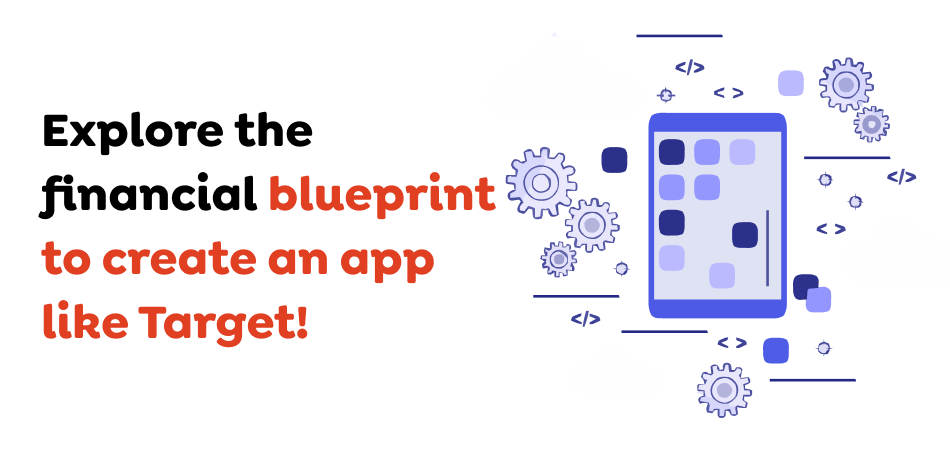
This is the first thought that comes to mind of those planning to create a similar Target-like shopping app. Depending on the needs of the app and other elements that affect the development costs of the app, it could range from $20,000 to $45,000. It is not a definitive cost, just an estimated one. The development costs of marketplace apps are according to:
1. Application Platform App Development:
The costs of developing a Target-like application vary depending on the operating system you select. Mobile app development using Android is more expensive than development on the iOS platform.
2. Design of the Application:
The cost of an app like Target also depends on the design complexity you select. A mobile app with a clean and attractive layout will help users spend more time on the app and allow them to shop long. A user-friendly design improves the user experience. Also, don’t be afraid to invest in the design of your app. The more appealing it is for the user, the more its usage and conversion rates will increase.
3. App size:
The cost of development for shopping apps such as Target is based on the size of the app. The size of the app can be assessed by the features you add to it. However, an app that can use a small amount of space on mobile devices will have more attention in the marketplace. Since users don’t show a desire to download apps with huge sizes.
4. Application Developer:
Target is a well-known online shopping app development company. The cost of your app will depend on the AI app development company you select (the USA, the UK, and India). Their experience, expertise, and location affect the overall cost of developing your app.
Also Read : Revolutionizing Investment: How to Build a Trading App Like Robinhood
Factors Affecting the Cost to Develop A Shopping App Like Target?
We mentioned earlier that the app development company will provide you with an exact estimation of costs for creating an app that allows you to shop. Ensure you know the main factors affecting the price of building a shopping app like Target.
In no time, we’ll enter this space:
1. Platform Compatibility
The cost of developing a shopping app will be determined by creating an application that works for iOS, Android, or each. Developing native applications for each platform will be the most efficient, but the cost of building a shopping app like Target is greater. Although cross-platform development of applications that work for smartphones is a reasonable option, its features and interface could require an update
2. App Complexity and Features
The cost and time frame of creating shopping apps like Target depend on their complexity and volume of functions. It’s less expensive to integrate features such as chatbots or article intelligence (AI) and augment facts with try-on features and personalized ideas than to combine essential functions like listing items or shopping carts.
3. Development Team Location and Structure
These elements significantly impact the cost of constructing an app that stores products like Target. It’s possible to become more efficient if you hire an app development firm for mobile applications in less expensive areas. Although they may be more expensive than outsourcing the app to an ecommerce app development company for grocery shopping, in-house app development companies have greater control over the price of app development.
4. User Interface (UI) and App Design
A good UI/UX design is vital, but it also increases the cost of designing websites for e-commerce. Using experts in UI/UX design guarantees a user-friendly experience. However, simpler interfaces could make designing a shopping platform like Target more expensive.
5. Security and Payment Integration
Suppose you plan to build an app similar to Target; it is essential. It is necessary to be aware of an additional factor affecting the cost. Security features are crucial to ensure the security of consumer and financial data. Secure payment gateways like Google Pay or Apple Pay require more cash and knowledge. Knowing that this will increase the app’s price targeted for development is essential.
6. Updating and Maintenance
Last but certainly not least, it determines the cost of creating an app like Target. Once the app has been launched, set aside money for regular maintenance and support. To keep the app’s usability and to compete, this comprised improvements for the app, enhancements in performance, upgrades to protection, and potential future modifications to the functions.
Conclusion
As the demand for shopping on the internet and via mobile grows, so does the need for solutions that can make the process easier to make it easier. Shoppers can use AI-powered assistants to help users choose the most suitable from the thousands of choices. When creating an app like Target for shopping assistants, you must first decide what products you want to market and the people you wish to reach since it will affect your marketing strategy. Choose the appropriate platform to provide the best AI application development service since a personalized AI-based shopping assistant app is an essential tool for generating funds for your business. Partnering with Techugo, a mobile app development company, can provide the expertise needed to create an innovative and user-friendly shopping app.
Get in touch with us today to explore how we can help you create an innovative app like Target that meets your business needs!
Get In touch
We are excited to here from you and let’s start something special Together. Call Us for any inquiry.
Write us
sales@techugo.caJust a call away
About you

